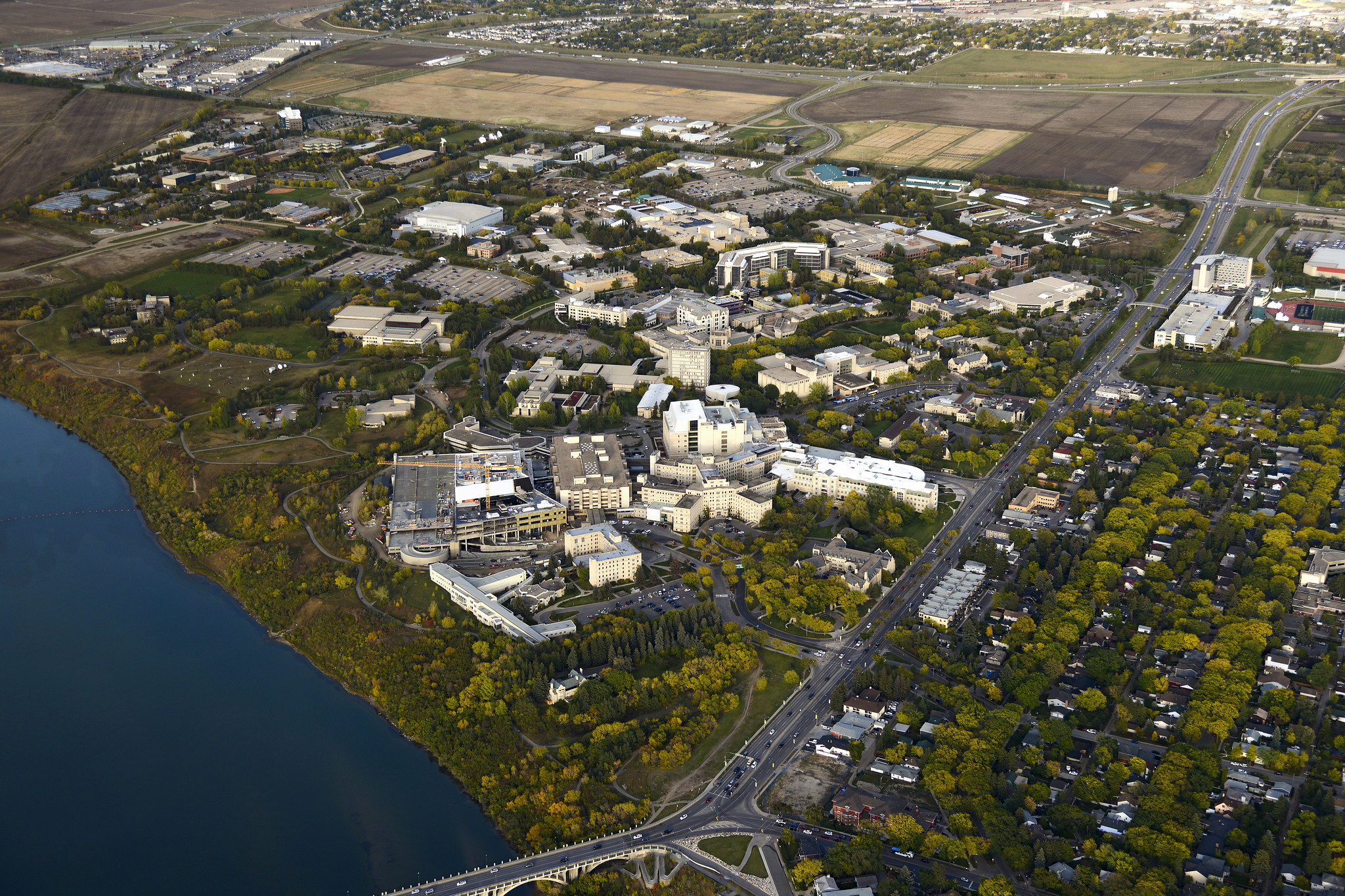
UrbanFYRE at USask
Under the City of Saskatoon-USask data sharing agreement facilitated through Research Junction, UrbanFYRE was developed by Dr. Corinne Schuster-Wallace (PhD) and Dr. Paul Hackett (PhD) for their fall Geography 130 course on environment, health and planning.
By Merle Massie"I was amazed at the creativity and exploration that students undertook."
The fall 2020 First Year Research Experience (FYRE) courses at USask were absolutely ablaze with student energy, learning, and development. Despite pandemic limitations, the online environment, and the challenges of introducing research into the curriculum at the first-year level, USask students brought some of their best work.
FYRE courses can be found across the university, from Pharmacy and Nutrition to the Edwards School of Business, to the College of Agriculture and several disciplines within Arts and Science.
Three key components make up a FYRE class: the teaching professors use research as a way for students to learn course content; the class has one or more paid research coaches to support students to learn necessary research skills; and the FYRE project follows the research cycle of developing a question, investigating that question to create an argument with analysis and evidence, and sharing those results with people beyond the professor.
In fall 2020, FYRE went one step further. Under the new City of Saskatoon-USask data sharing agreement, UrbanFYRE was developed by Dr. Corinne Schuster-Wallace (PhD) and Dr. Paul Hackett (PhD) for their fall Geography 130 course on environment, health and planning.
The University of Saskatchewan librarian, Sarah Rutley, an expert in data, GIS and maps, played a direct role as a liaison between the professors and City of Saskatoon partners.
“My role was working with instructors and research assistants to build a picture of the types of data that might support the course’s teaching and learning outcomes, working with the City to understand what is available to be shared, and getting the course data to the instructors in a usable format,” Rutley explained.
UrbanFYRE used Census of Population data sets broken down by Saskatoon neighborhoods. Students could cross-compare neighborhoods such as Varsity View with Stonebridge, East College Park with Kensington and dive deep into specific issues, such as land use, demographics or related indicators.
Rutley, a data expert, found the whole process eye-opening. “It’s been a learning experience,” she said, “getting a sense of the diverse types of data generated by [the various aspects of] municipal governance.” As the USask Library’s City of Saskatoon datasets grow, so will the number and possibility of research projects.
The GEOG130 FYRE students clearly enjoyed the process. “I was amazed at the creativity and exploration that students undertook,” reported Dr. Corinne Schuster-Wallace. “The fact that they are provided with tools and support, but are then essentially left to their own devices provides them with an opportunity to stretch themselves and lead the process, rather than being directed.”
The data sharing agreement is part of the larger USask-City of Saskatoon Memorandum of Understanding signed in 2018 to “explore collaborations that will address issues related to urban planning, land development, reconciliation, transit and research collaborations.” Research connections are driven through the Research Junction program, which supports research collaborations by identifying new ways to connect the City of Saskatoon and USask research communities. Meaghan Risling is the USask lead on this program.
Dr. Schuster-Wallace noted, “the use of city data was an exciting development” to take GEOG130 in a new direction as an UrbanFYRE course. She added, “Students did a great job of collaborative evaluation of neighborhoods and some…[augmented] their data through clever calculations” such as using house sale prices or retirement home capacity as part of their neighborhood analysis.
The student groups produced 3-minute videos to showcase research question, methods and results, which were shared with the whole class for discussion and feedback. A selection of the best videos was shared with City of Saskatoon in late January.
As the first iteration, UrbanFYRE was clearly a success, but both Schuster-Wallace and Hackett add, the next version will be even better. “We can ask even more” of the students, Hackett stated, with increased emphasis on video recording and quality and added refinement and breadth to the research questions students could explore.
Rutley added, there is room to bring an “even stronger data literacy component” to UrbanFYRE, as a way to support student skill development.
Both Hackett and Schuster-Wallace agree: UrbanFYRE only increased their appetite for more city-university collaboration, to see what students can do with more neighborhood data, and possibly to undertake specific research questions of interest to the city. As the city-university partnership picks up speed, the quality and amount of city data will only grow, Rutley adds.
Leveraging the city-university partnership via UrbanFYRE is a win in so many directions: students learn and practice research, analytical and communication skills using real data; USask faculty find teaching success in using research as a teaching method; and the City of Saskatoon has a long-term, coordinated space where students can address issues of interest to city planners and developers, and for city neighborhoods themselves.

